Ever since my girls were toddlers, they loved to dance. They took dance lessons, competed in regional and national competitions with No Limits, and performed in Merit Academy’s summer musical productions. When they went to college, Nicole danced with the Stanford Dollies, Urban Styles, and Jam Pac’d; and Jaclyn danced with the 5C Dance Company, Monarch Dance Company, and Dance Design. They loved to dance and it helped shape who they are today. Here are some of my favorite memories.



















Ever since my girls were toddlers, they loved to dance. They took dance lessons, competed in regional and national competitions with No Limits, and performed in Merit Academy’s summer musical productions. When they went to college, Nicole danced with the Stanford Dollies, Urban Styles, and Jam Pac’d; and Jaclyn danced with the 5C Dance Company, Monarch Dance Company, and Dance Design. They loved to dance and it helped shape who they are today. Here are some of my favorite memories.






























Students graduating from UC earn more than the median income for all California graduates within six years of earning their degree and, on average, double their earnings within ten years of graduation. Earnings potential is an important factor to consider in the college search and enrollment process. UC graduates earn about $43K at two years after graduation, $88K by ten years after graduation and $110K by sixteen years after graduation. Naturally this varies by industry, but even alumni working in fields like Fine Arts or the non-profit sector that tend to have lower compensation rates still exceed median nationwide salaries.
UC students from all income quintiles succeed in achieving incomes that surpass those of their parents, with over 90 percent of the lowest income students, and 50 to 70 percent of middle income students doing so. UC is an equalizer for students who come from the bottom 20 percent of income – that is, they go on to earn as much as students who came from middle-income families (reflecting the 3rd and 4th quintiles). Their earnings usually double within 10 years of graduation.
More than 73 percent of UC alumni live and work in California, the fifth largest economy in the world. UC is the state’s third largest employer, supplying one of every 45 jobs, and the university plays a critical role in bolstering California’s economy. Investing in a UC education benefits the state, as every $1 of state funding will generate or support over $21 in economic impact.
As students and families begin a new academic year, and engage in the search for college opportunities, the cost of attendance and availability of financial aid informs concerns about the value of a UC education. The new Tuition Stability Plan freezes tuition for students enrolling in fall 2022 for 6 years, making it easier for families to plan effectively. From the time of the students’ enrollment through graduation, families will not have to worry about unexpected tuition increases or hidden fees. UC offers one of the nations’ strongest financial aid programs, granting more than $4.8 billion dollars annually. Students graduate with almost $10,000 less debt on average when compared to national statistics. More than half (56%) have no student loan debt at graduation.
Finally, graduation and time-to-degree matter. Students and their families want to be assured that they can graduate in a timely manner. UC students have one of the highest overall graduation rates in the country. Freshmen take an average of 4.15 years to graduate with 86 percent graduating from UC in 6 years. The average time-to-degree for transfer students, once enrolled at UC, is 2.4 years, with 89 percent graduating within 4 years of entering.
The qualitative value of UC is a simple and powerful story to tell. We promote the excellence of a UC education with internationally recognized faculty including many Nobel Laureates, and winners of other prestigious awards: the Pulitzer Prizes, the Fields Medal, the National Medal of Science, and MacArthur Genius grants. We are proud of the diversity and vibrancy of our campus communities, the breadth and depth of opportunities for students in and beyond the classroom, and our commitment to the academic, personal, and professional development of our students. All these remain characteristic of our campuses and community; they are hallmarks of UC. But we shouldn’t forget the numbers. They also have a story to tell about the value of UC.

College-bound seniors are off to a busy season as they juggle their 12th-grade classes and between 7-20 college applications. This year looks different because colleges are still reeling from COVID challenges with SATs and ACTS, campuses tours, and interviews. Here are 6 tips to consider when organizing your college applications:
#1: Choose colleges based on the majors offered
Most students make the mistake of choosing colleges based on their rankings or locations. Instead, research the majors you’re considering and choose the colleges that have programs that align with your interests. Check out their required courses and electives. You’ll be surprised to see the difference in courses offered at different colleges.
#2: When to submit SAT/ACT scores if they’re “Test Optional”
Colleges know that students who are good test takers will find ways to take and submit the SAT or ACT. Some students travel hundreds of miles to take them. If your test scores are stronger than your GPA, submit them. If they’re weaker than your GPA, don’t submit them if test scores are optional. Some colleges are Test Blind, which means that they won’t consider test scores even if you submit them. The University of California (UCs) and California State University (CSUs) are test blind.
#3: How to write intriguing essays and personal statements
When reading essays, admissions officers hope to learn something about you isn’t included in the application. Tell stories that illustrate your personality and your passions. Don’t write about throwing that winning touchdown because thousands of other students will be writing similar stories. Instead tell them what makes you unique. Open with a hook that intrigues them so they’ll see what you’ll bring to their incoming class.
#4: How to ask for strong letters of recommendation
Teachers write hundreds of letters of recommendation every fall and most use a few templates to streamline the process. By organizing a comprehensive resume with photos listing your projects, volunteer work, employment, and extracurricular activities, you’re giving them the insight and incentive to write a descriptive and positive recommendation. Include a cover letter to thank them for something valuable they’ve taught you, tell them something unique about yourself (project, business, extracurriculars), and give them a glimpse into what you hope to study in college. Make time to establish a positive relationship with them.
#5: When to apply Early Decision, Early Action, and Regular Admission
While your odds of getting in are better if you apply Early Decision (ED) or Early Action (EA), only do so if your grades, SAT/ACT scores, and your projects are good. If you’re still trying to boost your GPA during the fall semester, apply regular decision so your extra weighted grade will be calculated in the overall GPA. If you’re hoping for better scores on a future SAT date, it’s better to wait for regular admission dates. However, if your GPA and test scores are solid, and your project is complete, then apply early and hear from the colleges by mid December. Remember ED decisions usually don’t include the best scholarships because colleges know you’re going to matriculate and they save their big scholarship offers to entice other students to enroll.
#6: How to organize applications so you don’t miss deadlines
To reduce stress, enter each application’s deadline in a planner or digital calendar. Then starting with your first deadline, write first drafts of the essays and resumes, create portfolios for art and music applications, and collect other documentation. Enter each task into your planner by blocking off time to complete each item. Continue to add a new college every week. You’ll be juggling many colleges at various completion stages throughout the application season. Minimize extracurricular activities so you have time to manage all of your applications while maintaining good standing in your classes.
Colleges expect students to do their own work – so as tempting as it may be – parents, don’t write your kids’ essays, set up their interviews, or complete their applications. This is a good opportunity for your child to take responsibility for organizing each application and meeting all deadlines. Your child will mature and transform into a confident young adult during this senior year. Sit back, watch and marvel.

I am hosting a NRG Firewise event (North Rodeo Gulch in Soquel) on Saturday, Sept 11th, from 10:00 am to noon. It will be an official introduction to Firewise USA and will be an information-packed fire prevention seminar.
Our speakers include Manu Koenig (Bd of Supervisors; 1st District); Marco Mack and Tony Akin (Central Fire: address signs/CodeRED,home hardening); Stephanie Smith (Firewise); Dawn Mackey (Ham/MURS); Rosemary Anderson (CERT); and Matt Abernathy (Chipping with RCD).
I’ve also invited representatives who manufacture products to protect homes: John Simontacchi (Firefree); Nate Oliver (Vulcan Vents); Steve Shugart (consultant); Bill Hendrix (Safer Building Solutions); and Cindy Weigelt (State Farm homeowners insurance and WDS).
Two students will present their innovative projects: Arul Mathur (F.A.C.E. Fire Activated Canister Extinguisher) and Anush Anand (Replace Vinyl; Save Your House).
I plan to discuss our 3-year plan to mitigate wildfires in our area, how to organize a Go Bag with things around the house, and where to sign up for micro communities and the benefits of working with your neighbors.
We will launch our website nrgfirewise.com on Wednesday, Sept 8th. Looking forward to communicating with the 188 households on NRG through the forum. Hope it creates a positive experience for the members and a “keeping up with the Joneses!” movement to take action in fire prevention.
We are hosting the event at the Locatelli Ranch — one of our Safe Zones — so residents become familiar with the location. If you would like to join us for the event, please RSVP because we have limited seating. It will be outdoors and masks/social distancing will be required. We hope to record the event and will post the link here if we do.


Now that our children are back in school after a year and a half of zoom classes, let’s make sure they have the tools and support they’ll need to be successful. Here are 5 tips that can help you guide them.
1. Organization with Merit Planner
All kids (and parents too!) need structure. When they start school, they should have their own paper planner where they can enter homework, quizzes/tests, and project assignments as well as sports, clubs, and social events. I use the Merit Planner because it has 7 days (not just school days) that are divided into 30-minute segments starting at 6:00 am and ending at midnight. By entering in classes for the semester, they’ll have the structure to enter in homework, test, and project dates for each class.
2. Homework and Study Skills
While in class, your children can enter homework assignments right in their planners under the class name on its due date. At home, they can schedule time in their planners to do each task needed to complete their homework. They might block off 45 minutes for math, 30 minutes for research, and 60 minutes to read. By allotting chunks of time to complete the work, they’ll know exactly how to gauge each night’s workload.
While most students prefer to study for exams the night before, research shows that they’ll learn the concepts better and retain this knowledge for longer periods if they spread out their studying over 4 days. To study for a vocabulary test on a Friday, for instance, they could research the definitions by making flashcards on Monday. Then on Tuesday, they study the words and self test; on Wednesday, they write sentences using each word; and on Thursday, they test themselves again. This will ensure that they ace their tests.
3. All Flashcards
When students review all of the flashcards that they have written for a course — once a week for the entire school year — they don’t need to relearn the concepts for final exams at the end of the term because they wouldn’t have forgotten them. Have your child review all flashcards or notes on Sundays, and ask them to put these tasks in their planner for the entire school year.
4. Fun Stuff
Set up play dates for young ones and host parties for teens. I used to cook up my girls’ favorite foods and allowed them to invite a dozen friends for sleepovers. They always had a blast and I loved being the fly on the wall so I was always in the know about what was going on in their lives. Have your children block off time in their planners for sports, social time with friends, and family outings. That way, you’ll be sure they have a happy balance of academics and fun.
5. Family Meetings
Have regular weekly family meetings to keep open communication and to discuss goals. I used to set these meetings for Sunday mornings and serve their favorite Sunday brunches. Sitting around the dining room table with our planners, we discussed each of our plans for the following week. This helped us streamline transportation schedules, family outings, meal prep, and chores. I found that by giving everyone plenty of notice for family vacations, holiday party dates, and medical appointments, there was less resistance from the kids because it was written in their planners by themselves.
Start the new school year with a system that keeps them organized and promotes strong study skills. This will build their academic skills as well as personal confidence.

Just delivered gourmet Indian food to the ER staff at Valley Medical Center (where Nicole works as an ER doc) for my Aunty Sachi and Uncle Frank. They’ve been serving all of us during the pandemic, and now that they’re dealing with the more contagious variant, I thought they could use a little treat: Tandoori chicken, fish tikka masala, chicken korma, veggie biriyani, aloo palak, and of course, garlic naan. All my favorites! Thank you to all ER staff everywhere! And, thanks to my Aunty Sachi and Uncle Frank who finance these endeavors.

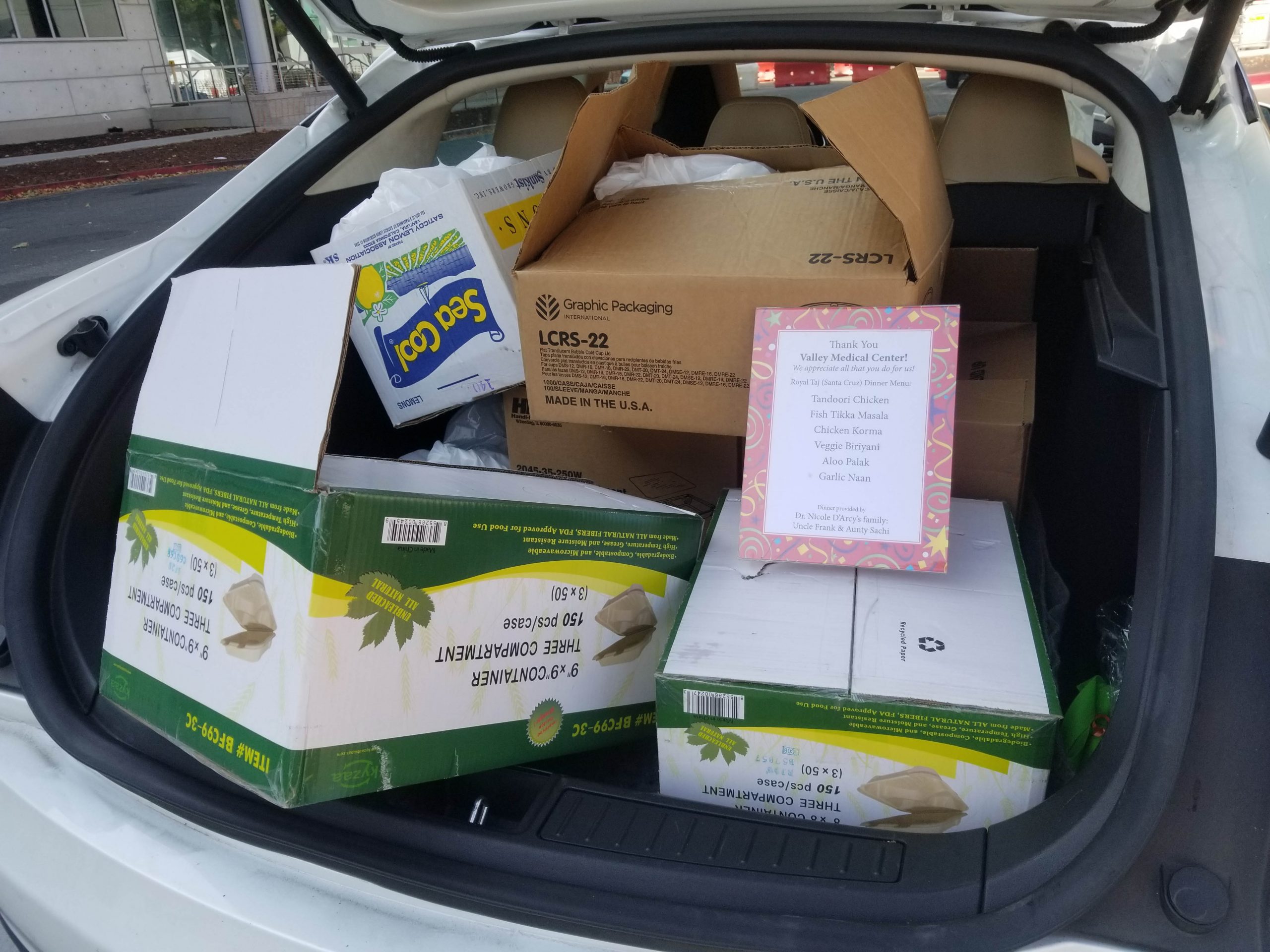
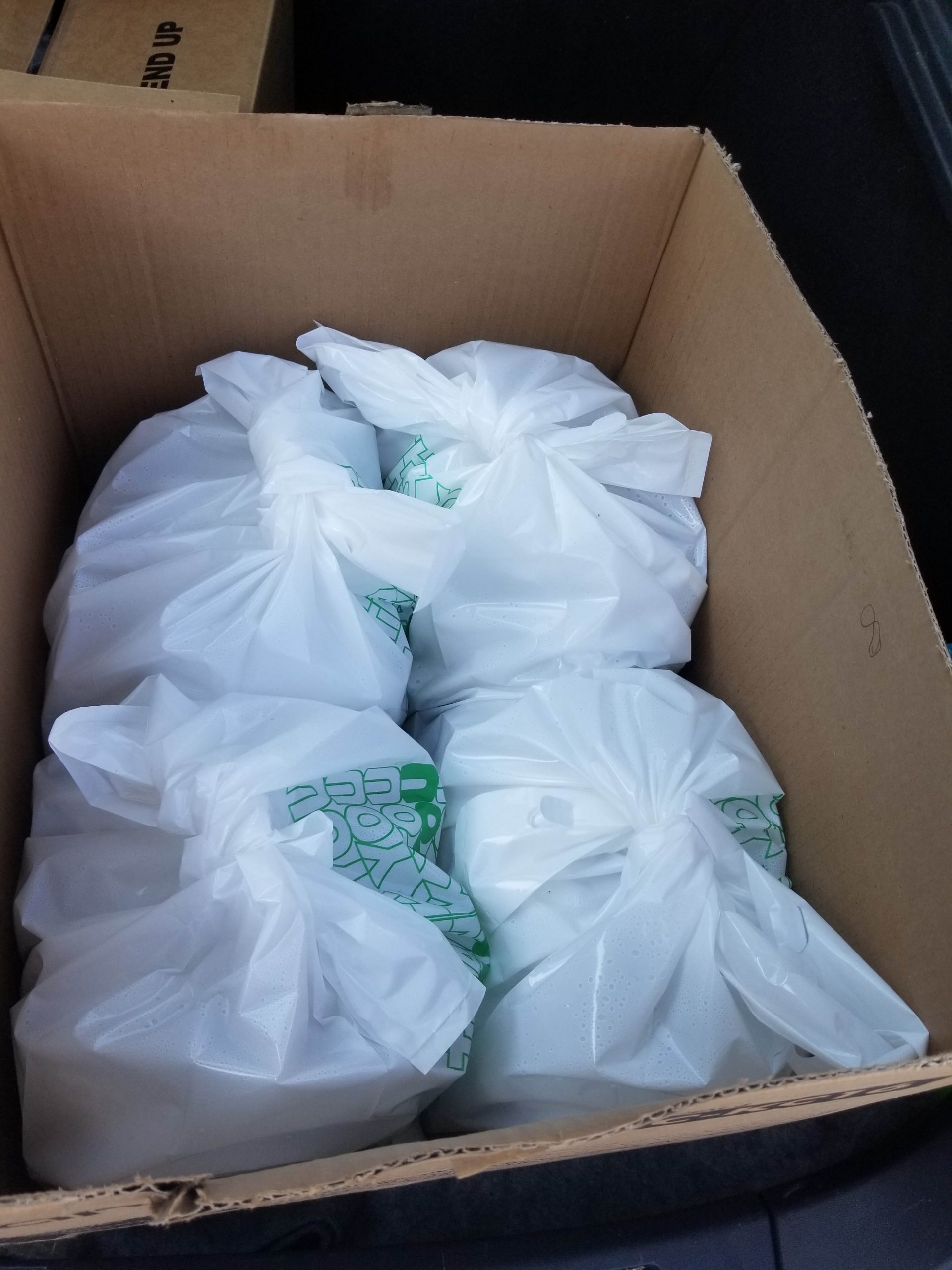

Parents who feel blindsided by the ridiculous costs of baccalaureate degrees from 4-year universities are seeking alternative paths for their children. 24 states now allow community colleges to offer bachelor’s degrees.
Low-income students, older students with children, or those who are the first in their families to attend college benefit from community colleges that offer bachelor’s degrees. These students are more likely to complete a baccalaureate program if they don’t have to apply to competitive 4-year colleges after they complete their first 2 years.
But public universities worry that they’ll lose applicants if they have to compete with community colleges. The cost of getting a baccalaureate degree at a community college is about 25-50% less expensive than getting the same degree at a university.
In California, there are 15 community colleges that offer just one baccalaureate degree. San Diego Mesa College, for instance, offers a health information management bachelor’s degree, which is neither offered at the Cal State University system nor the University of California system. The program is a huge success with graduates placed in jobs within 3 months.
We need more alternative paths for students to attain that coveted bachelor’s degree. Not every student has the ability to apply to and transfer to 4-year colleges, commit to attending college without working, pay $80,000-$300,000 in tuition and room/board, and leave their family members who might need their support. Let’s open more doors to all students so they can make career choices that work for themselves.

When my girls were young, they raised pet rats to learn about animal behavior at Merit Academy. They discovered that when they placed just 2 rats in a huge maze, the rats coexisted happily. But when they placed dozens of rats in the same maze, the rats became territorial, anxious, and vicious.
Fast forward to 2021 when our planet is almost 1.5 degrees warmer than it was pre-Industrial Revolution; we are facing severe droughts, wildfires, and hurricanes. A hundred years ago, we never worried about our water supply. Today, massive droughts in California have pushed people to do unthinkable things to get water.
Like rats, when people don’t have enough water, we will do anything necessary to get it. Thieves are stealing billions of gallons of water by tapping into fire hydrants, rivers, and even family homes and farms. Our droughts are causing reservoirs to dry up, which is causing record-levels of thefts.
As many municipalities restrict water usage, we’re seeing an uptick in illegal water thefts. The California Dept of Fish and Wildlife has made more than 900 felony arrests of illegal cannabis growers. These growers have run over 400 miles of pipes diverting water from streams to their manmade dams.
In Southern California, the water system crashed last year after thieves tapped fire hydrants and water mains. To protect our water sources, officials are removing or locking fire hydrants and securing key water sources.
As we begin to face real repercussions of a hotter planet, people will behave in desperate ways to get the resources they need. This is just the beginning of what we can expect to happen when we can’t get enough water, food, or even oxygen to survive. We need to make reducing CO2 in the atmosphere our number one goal.

Just harvested my cherries, apricots, peaches, and plums. Seems the extra attention I gave my fruit orchard this year paved the way for bumper crops – another benefit of sheltering in place! I experimented with drying the apricots and peaches using a dehydrator. Nicole loves the slab apricots (I didn’t know that was a thing…) Using my new vacuum sealer, I preserved batches of fresh fruit that I’ll enjoy during the winter. There’s such a sense of accomplishment after harvesting organic fruit.

Bumper crop of cherries
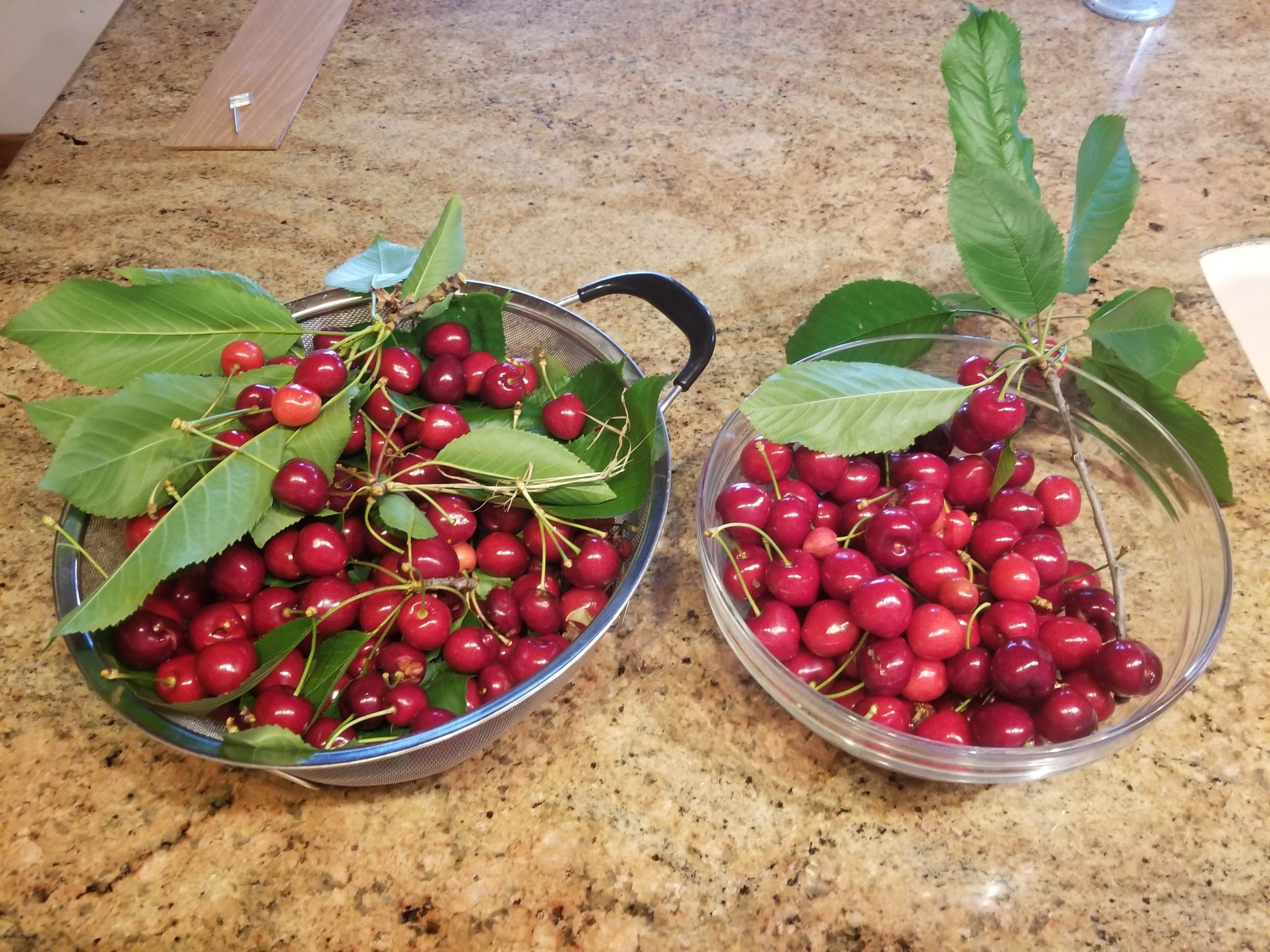 Cherries from 2 different trees
Cherries from 2 different trees
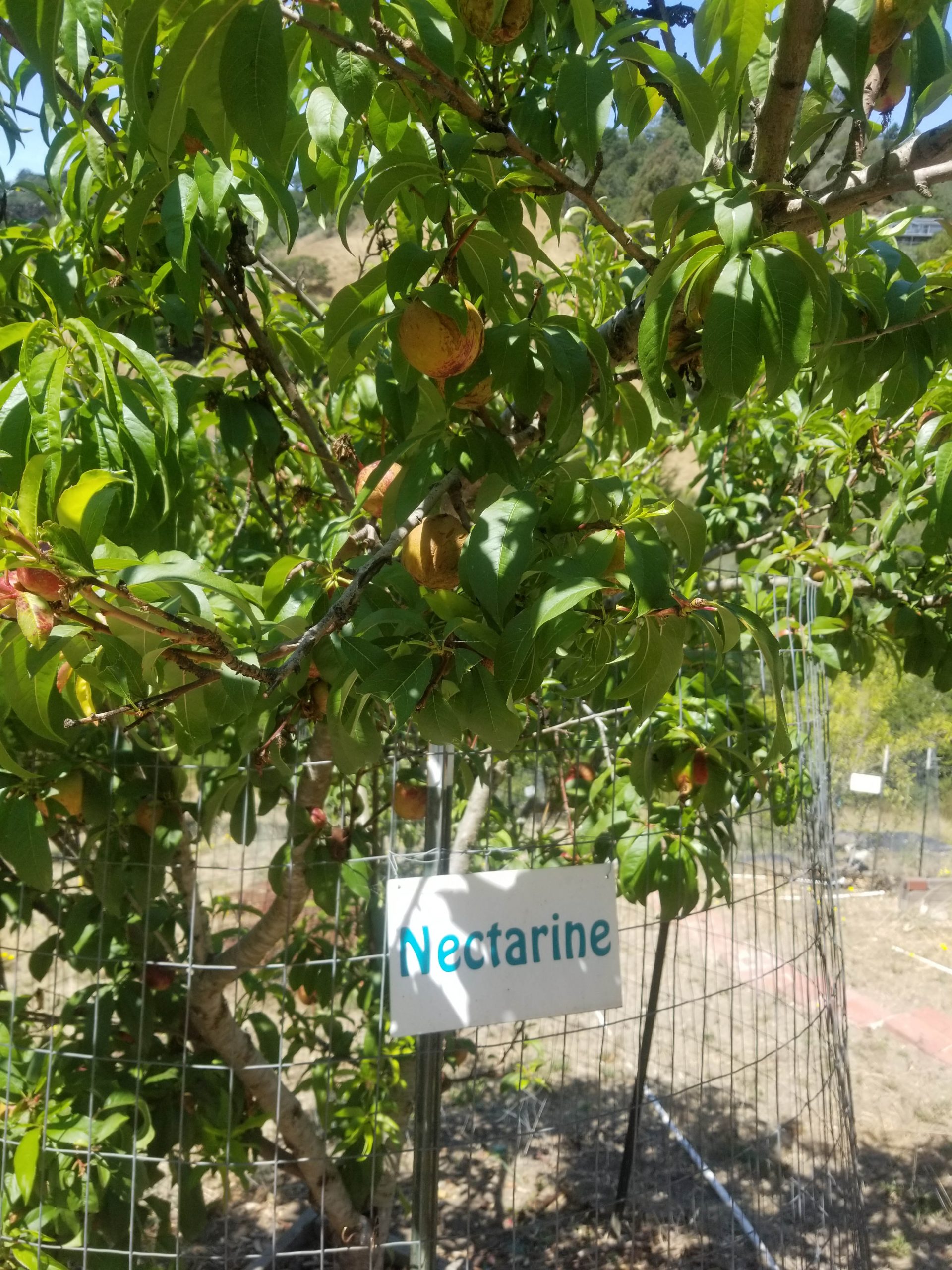
First harvest of nectarines this season
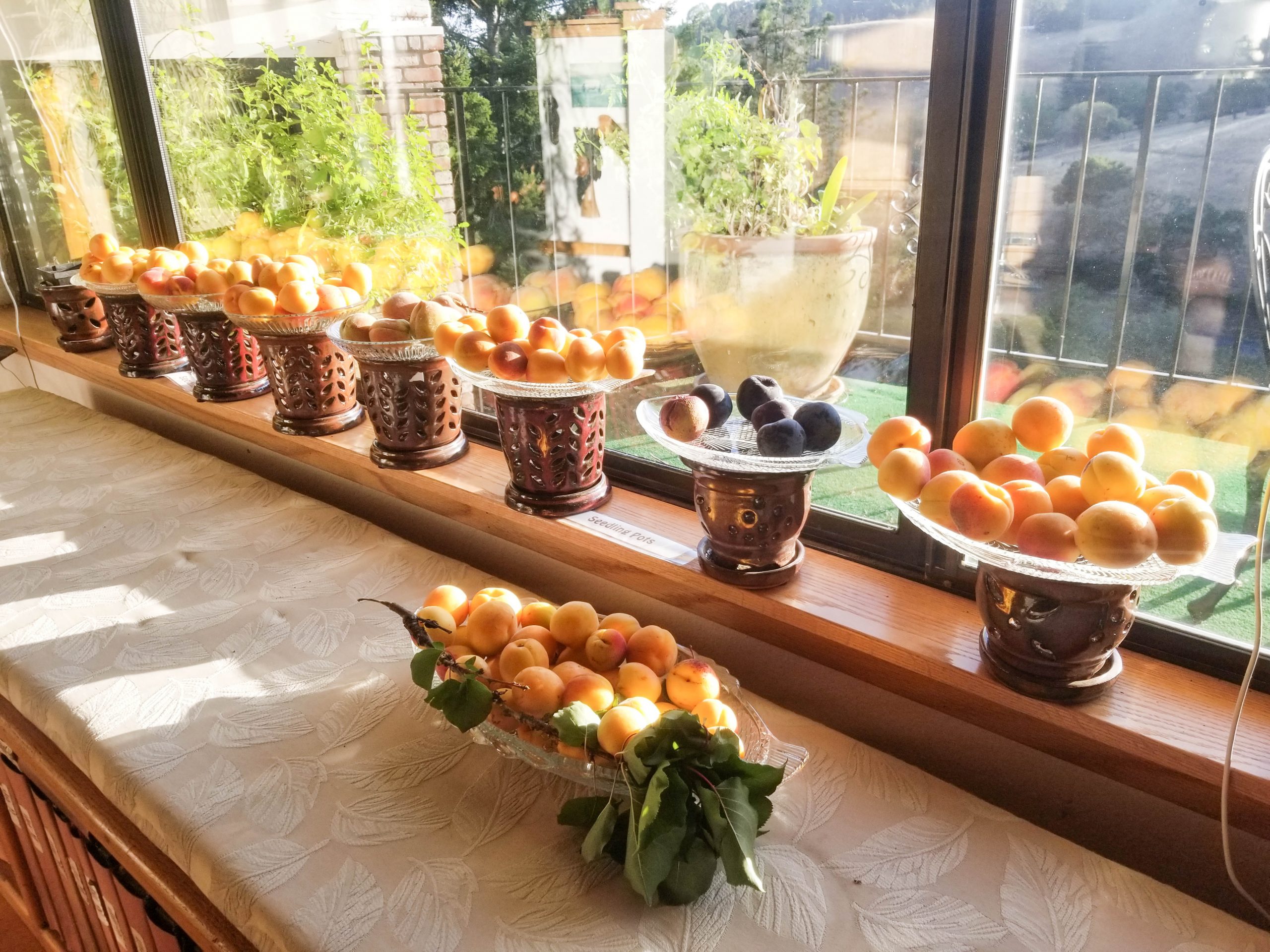
Ripening peaches, apricots, and plums on window sills —

Drying fruit in my nifty dehydrator

Dried apricots, peaches and bananas
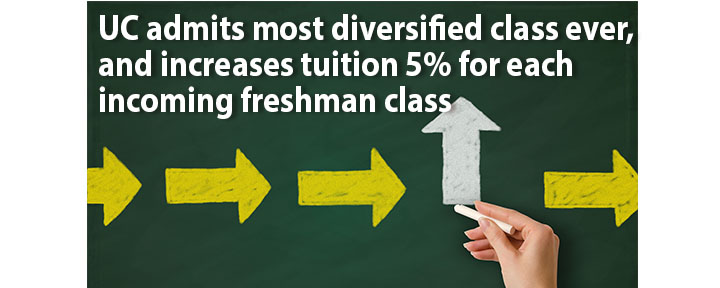
As usual, the University of California is stirring up controversy in its policies for admissions and tuition hikes. Last year, the UCs broke their own record when they received over 200,000 freshmen applications. That was the first year they did not consider SAT or ACT scores in admissions decisions, which made it possible for students who didn’t have the resources to boost their standardized test scores by paying for prep programs to be considered for admission based on their GPAs and essays.
This year, 43% of admitted students come from underrepresented racial and ethnic groups. This was the most diverse undergraduate group in UC history.
37% Chicano/Latino (31,220 students)
34% Asian American (28,402 students)
20% White (17,024 students)
5% African Americans (4,608 students)
.045% American Indian (380 students)
Across all of the 9 UC campuses, 45% of admitted freshmen were the first in their family to attend college, and not surprisingly, 45% of all admitted California freshmen come from low-income families.
Just last week, UC Board of Regents announced that they will be raising tuition for incoming students beginning in fall 2022. This has caused an uproar from UC students. The UCs plan to raise the tuition up to 5% based on inflation plus other campus fees (approximately 2%) every year. They claim that they will face a $694 million shortfall by 2026-2027 without these increases.
Because over half of UC undergraduates receive 100% free tuition and fees, this tuition plan only affects students whose parents have higher income. The students whose parents are in the middle income range are the ones who ultimately get squeezed the most. These families claim that it will be impossible for them to attend because they don’t qualify for financial aid and they’ll be subject to a 7% increase in tuition.
The one positive thing about the new tuition policy is that once a student starts a UC as a freshman, their tuition will be locked in at that rate for 6 years. Curious to see if these policy changes will negatively or positively affect the quality of education at the University of California.
